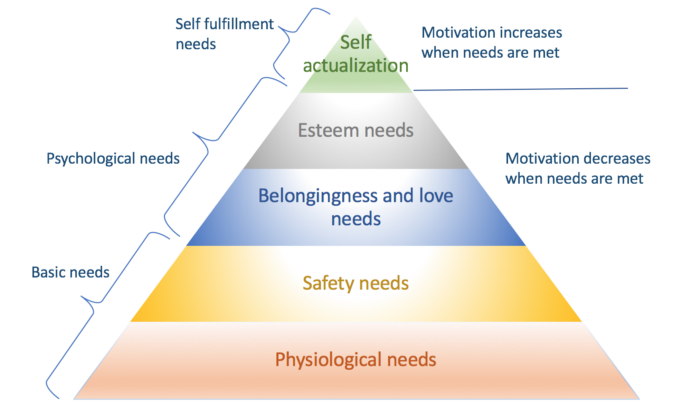“I am the master of my destiny and captain of my soul.” These verses, taken from the poem Invictus by the British writer William Ernest Henley, could sum up the concept of personal development and the formidable quest for self-realization.
Personal development or personal fulfillment touches all aspects of our lives:
- Balance of life,
- Overachieving,
- Self-confidence,
- Self-esteem, etc.
What is Personal development?
Personal development is a global process of reflection on oneself and the development of one’s potential in order to improve the quality of one’s life and to achieve one’s deepest aspirations. It can affect different aspects of life:
- Professional,
- Personal,
- Spiritual,
- Financial,
- Relational,
- Family.
Actions and progress in one area generally have positive repercussions in the others. Therefore through better self-knowledge, the individual understands and tends to achieve his true aspirations through goals to be reached. Personal development encompasses a state of mind, a lifestyle, and a methodology to restore meaning to one’s life.
Why contribute to your personal development?
In concrete terms, the goal of personal development is to make us happier and more fulfilled in our everyday life. Throughout our lives, we seek to fulfill needs in order to live in harmony with ourselves and our environment. These different needs were defined and classified by the American psychologist Abraham Maslow as early as 1943. He used a pyramid shape to highlight the hierarchy between each category of people’s needs:

When the needs of one category are met, individuals develop new needs in the next category. The pyramid diagram illustrates the rise of individuals as their needs are met.
Personal development corresponds to the need for fulfillment to which each of us aspires and which varies from one individual to another. It can be as follows:
- Develop skills,
- Become the best version of yourself,
- Getting rich,
- Setting an example, etc.
Realizing your potential has many benefits for self-esteem and quality of life:
- Know how to assert yourself,
- Make decisions in line with its values,
- Improve your relationships with yourself and with others,
- Be more positive,
- Gaining autonomy,
- Boost your creativity and develop new talent, etc.
Who is the personal development for?
Often, personal development is born at a key moment in life:
- a shock,
- a trauma,
- an important turning point, etc.
Many people talk about a trigger and then about the need to change behaviors, to change things to realign with oneself and one’s deepest aspirations.
However, this trigger is not necessary to be interested in realizing its potential. Each of us can one day aspire to become a better person or improve certain aspects of our lives.
Personal development, yes but accompanied!
Although it is a personal process, personal development must be a shared process. What could be better than to feel supported by those close to you in order to achieve your dreams and not get discouraged and give up along the way?
Talk about your projects around you, share your experience and you might even inspire your loved ones to do the same! It is also recommended that you find a partner to help you in the pursuit of your goals:
- it can be a friend to go for a run,
- a colleague for support in quitting smoking,
- an internet community to learn computer language, etc.
In some cases, coaching by a personal development coach can also be helpful. Take the time to find the right one for you, depending on the goals you are pursuing. Define beforehand what you expect from this coaching and how long it will last.
Finally, have a mentor to guide you: someone who has taken the path you are about to take and has succeeded. You will benefit from his or her experience and valuable lessons learned. And in turn, you can become a mentor to someone you are guiding in their first steps.
How can you keep your motivation intact to achieve your goals?
We often hear about hacks, shortcuts to get what we want immediately. However, personal development is a demanding, long-term process that requires a high level of involvement.
If you are looking for a shortcut, you actually want to “have discovered” rather than “discover”. This is good in some situations, but it doesn’t work in terms of personal development.
Self-realization is therefore a process of progressive changes in one’s daily life. This process is strewn with pitfalls, mountains to climb, obstacles to overcome – difficult moments that sometimes make you want to stop everything.
This is when you have to remember your aspirations and commitments in order to stay motivated. To move forward effectively and achieve your goals, there are a plethora of methods and tools to help you stay motivated.
Personal development plan
To make sure that we are on the right track and do not give up along the way, we need to clearly define it. To do this, draw up your personal development plan, a real process of success towards your goals!
- Take stock of the current situation, from different aspects: where do you stand on :
- Your path in life?
- Are you satisfied with that?
- What do you like to do?
- What do you want to do?
- More importantly, why?
- Identify your deepest aspirations.
- Find your long, medium and short term goals.
- Priceless motivations for achieving these goals.
- Your level of commitment.
- These last points are essential: it is to these answers that you will turn in moments of decreased motivation. For example, if you want to be healthier, list the reasons why this is important to you. Try to project yourself once you have reached this goal, the benefits you will feel, other goals you can achieve with it, etc.
- Break down your goals into objectives to be achieved:
- How do you achieve your goals?
- Within what time frame?
- What will be the indicators of achievement?
- What will be the capacities and resources to be mobilized?
- The ones to be developed?
To help you define your goals, you can use the SMART method. These goals should be a balance between stress and boredom to create a stimulating feeling of flow.
Identify the steps to follow and become aware of the new behaviors to adopt:
it is best to break down a goal into small steps to ensure steady and satisfying progress. These steps will gently guide you towards new behaviors and habits that will lead you to your goals. For example, your goal is to quit smoking. Whether it’s gradual or immediate, define a new typical day with cigarettes and the means that will help you resist:
- Replace the “coffee and cigarette” duo with tea and a short walk,
- Introduce rituals to replace cigarette breaks (drinking a large glass of water, doing some stretching and breathing exercises, etc.).
- Go for it! Start with small and easily achievable goals to get you “in the saddle” and stimulate you.
- Not sure where to start?
- Having trouble making the first move?
Dare to step out of your comfort zone!
- Regularly monitor your progress and reward yourself: you only master what you measure! Seeing your progress is a source of motivation! And giving yourself a little fun with every goal you reach will boost your reward system and boost your motivation.
- Adjust your goals as you go along, or set new ones to keep progressing.
Personal development techniques
To go further in realizing your potential, you can rely on the many techniques that exist.
Here are a few of the best known that can help you develop your personal development plan and achieve your goals:
- Neuro-Linguistic Programming (NLP): using language to understand and modify the mental representations and automatisms of individuals in order to act positively on their behaviour.
- Sophrology: combining breathing, muscle relaxation and mental imagery (or visualization) exercises to soothe the body and mind, and strengthen cognitive abilities.
- Enneagram (of the 9 personality types): understand the 9 “enneatypes” of personality types, their fundamental motivations and their fundamental avoidance compulsions.
- Hypnosis: access to the unconscious to free oneself from blockages and bring out resources in order to better live with oneself and face difficult events.
- Positive Thinking: using positive thinking autosuggestion to direct one’s perception of one’s environment and circumstances in a positive and optimistic way.
- Mindfulness meditation: practice secular and therapeutic meditation to control emotions, reduce stress and prevent depressive episodes.
- Yoga: combining a variety of postures, deep relaxation, breathing and meditation practices for physical fitness and mental rejuvenation.
5 personal development exercises
Do you want to improve your state of well-being and feel light in your daily activities?
A few simple exercises can help you educate your mind to naturally adopt habits that will boost your well-being and energy. Quick and accessible to everyone, these exercises offer concrete results after only 3 weeks of practice at home or at work.
Would you like to know more? Discover 5 beneficial exercises for your personal development.
1. Relaxation to overcome stress
Stress, considered to be “the disease of the century”, continues to affect many people around the world. Understanding how stress is triggered is essential in order to effectively approach any relaxation exercise, including the one proposed here.
In order to optimize the results of the proposed relaxation exercise, one should first try to recognize, if possible, that the cause of the stress is not legitimate enough to cause so much pain.
The exercise consists of standing up and visualizing a protective bubble around you in which you will relax your shoulders and breathe in 3 steps:
- Inhale slowly through your nose and count to 6;
- Hold your breath and count to four;
- Exhale through your mouth as slowly as possible until your lungs empty.
These three steps must be repeated at least 4 times to begin to feel physical relaxation. After you have done this, extend your arms on each side to take up space and let your body and mind know that you can continue your activity, relaxed and confident.
2. Visualization to detach oneself from thoughts
Are you familiar with the expression “a hamster in the head”? Those who are constantly stirring their thoughts sometimes to the point of obsession should be concerned with the metaphor of the hamster running around in its wheel.
To detach oneself from one’s incessant thoughts requires one to focus one’s attention and concentration on something else.
For that:
- Close your eyes and feel the air you breathe in and out several times in a row.
- Then visualize a quiet place that you know or imagine. The important thing is that this place evokes a sense of peace and protection. If you can:
- Imagine a corner of water with a boat in which you delicately put down the thoughts that have been constantly cluttering your mind.
- Once dropped, push the boat so that it can move away from the horizon.
Enjoy your place for as long as you like before gently opening your eyes.
3. Getting up early to get organized
A good start to the day helps to condition your state of mind for the rest of the day. But you still need to know what it means to start your day well.
- For some, it means taking time for breakfast,
- for others it’s reading in bed or playing sports.
Whatever activity you choose when you get up early, it is important to take a moment to organize your day mentally or on paper.
The organization provides benchmarks that allow you to navigate in a clear and relatively well-defined environment without getting too overwhelmed by the unpredictable. Having a direction allows your mind and body to let themselves be carried further and to channel your vital energy, which then has no opportunity to scatter in all directions.
- Take the time to write down or mentally list the things to do during the day.
- and to prioritize them if possible from the least pleasant to the most pleasant.
This will increase your pleasure throughout the day.
4. Create a “Bucket list” to live and vibrate
Are you familiar with the principle of the bucket list?
This is a list to keep in your wallet that lists the things you want to accomplish over the course of your life. This can include both professional and personal accomplishments.
- Traveling to Paris,
- Skydiving,
- Openly assume an aspect of his personality,
- Forgive so-and-so,
- Laugh more,
- Write a book etc.
Aspirations are multiple and specific to each one
The exercise consists of writing your bucket list by integrating 20 elements that you would like to accomplish and imagining that anything is possible.
- This requires a parenthesis on one’s own social or cultural conditioning,
- And to indulge his deepest desires.
Keep this list in your wallet and take a moment to review it regularly.
Complete it as needed and check off the items once you have completed them.
5. Choosing your social interactions to boost your vital energy
This principle is based on the fact that some social interactions give you energy and others make you tired. Whether conscious or not, when you interact with a person, your energy level goes up or down. This is mostly due to the positive or negative nature of the exchanges you have with the person you are interacting with.
The proposed exercise requires you to question your willingness to engage in positive discussions.
- By choosing to positively generate discussions, you naturally attract interactions that increase your energy.
- Once you’re ready to approach your exchanges in a more favorable manner,
- Identify the people who choose to stay on your register and those who prefer to negatively direct your exchanges without judging them.
- Based on this analysis, give priority to discussions with people who are inclined to give you a positive response.
Practicing daily by doing these 5 exercises will allow you to improve your well-being quickly.
3 weeks – the famous 21-day rule – is the time it takes your mind and body to integrate new habits and feel the benefits.

